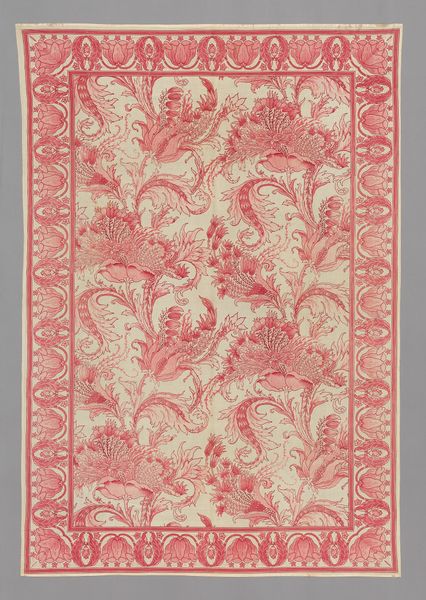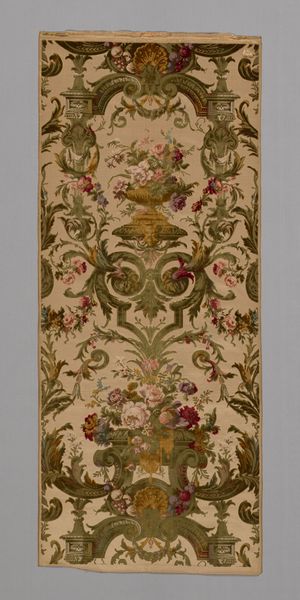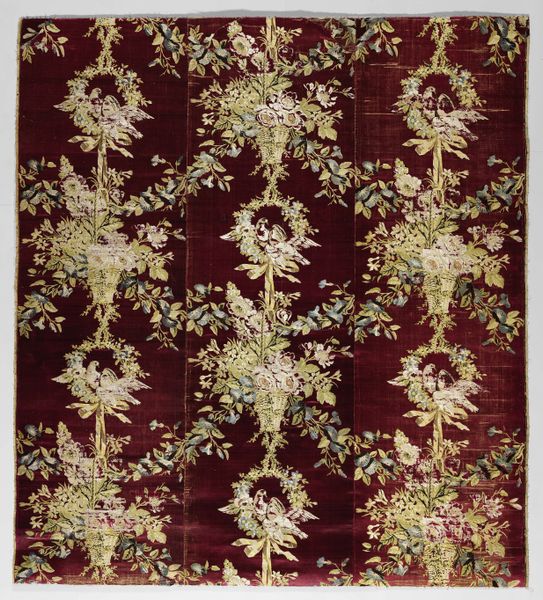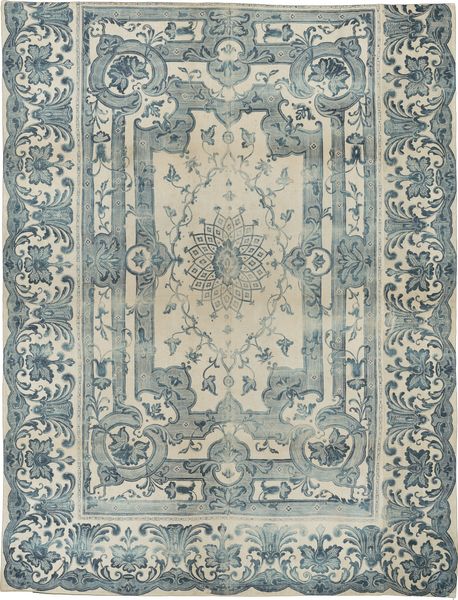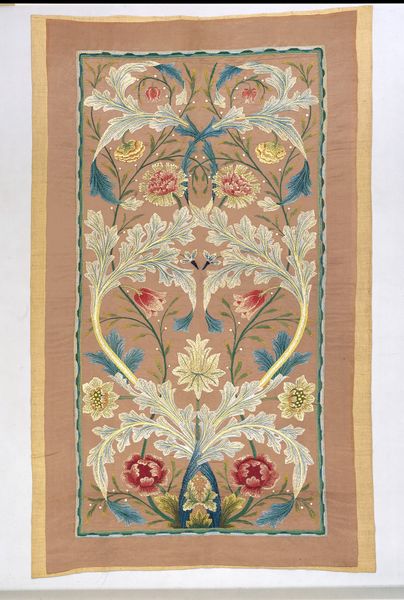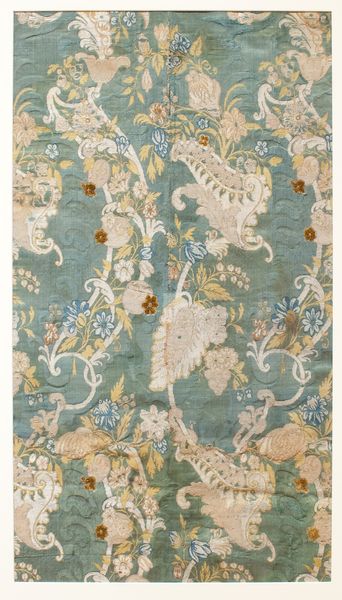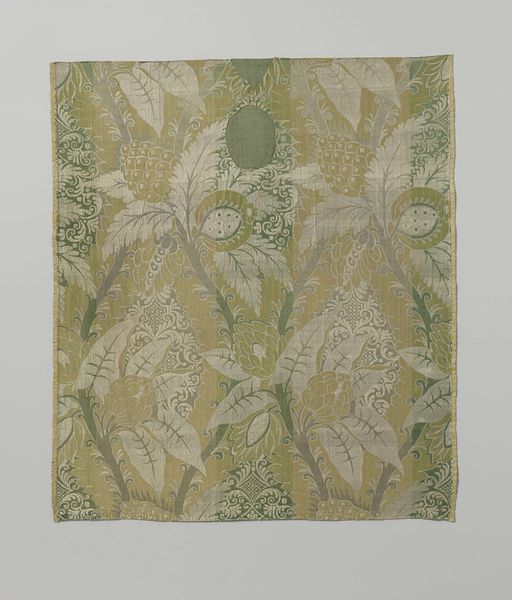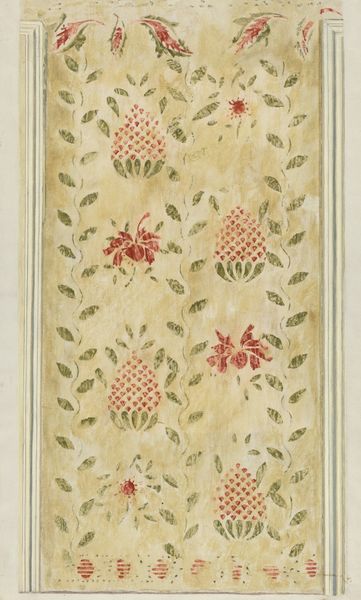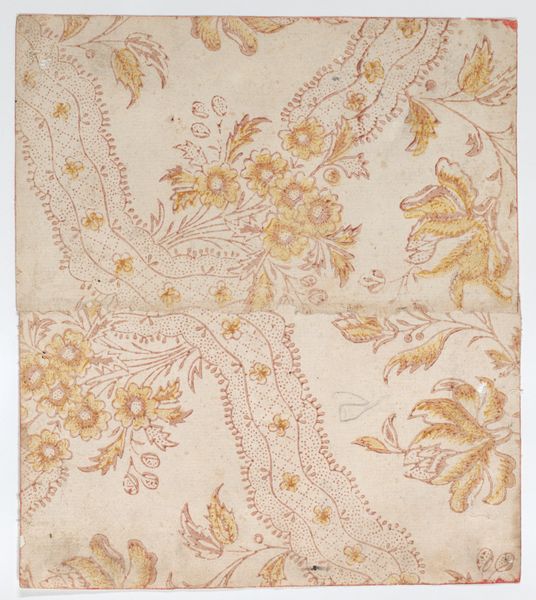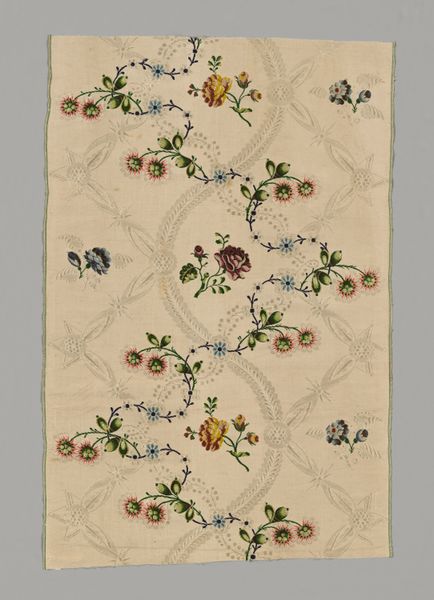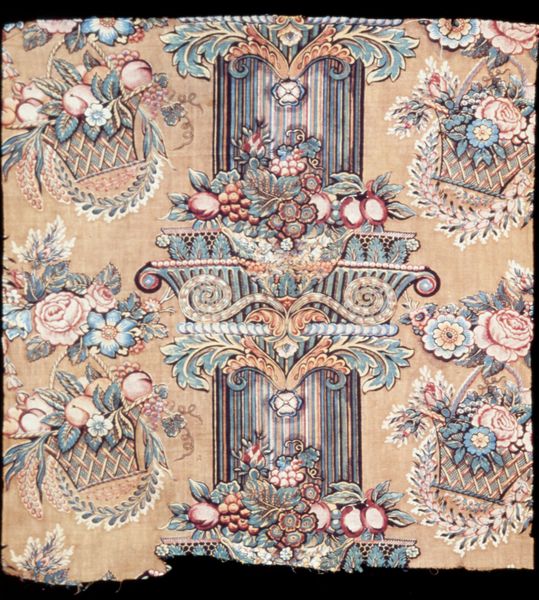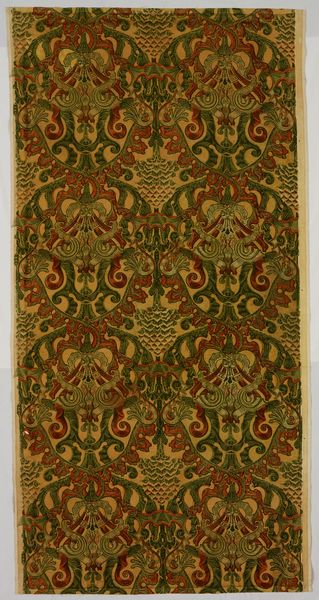
silk, weaving, textile
#
silk
#
weaving
#
textile
#
decorative-art
#
rococo
Dimensions: 41 x 21 in. (104.14 x 53.3 cm)
Copyright: Public Domain
This green floral panel was produced anonymously. Its visual language speaks to the aesthetic values and cultural norms of its time. The symmetrical design and stylized floral motifs reflect a longing for order and beauty. Perhaps this panel was made in the late 19th or early 20th century, when the Arts and Crafts movement flourished in Europe and North America. This was a reaction against industrialization, with an emphasis on handcraftsmanship and natural forms. The piece is a clear departure from Victorian gaudiness. The movement advocated for social reform and believed that art could improve the lives of ordinary people by promoting beauty and craftsmanship in everyday objects. Textiles like this one serve as tangible reminders of the complex interplay between art, society, and the human experience. The historical context can illuminate the meanings and values that have been invested in this piece. By exploring social, economic, and political forces that shaped its creation, we gain a richer understanding of its significance and enduring appeal.
Comments
minneapolisinstituteofart almost 2 years ago
⋮
Elaborate silk fabric such as this was very costly to produce. It would have taken at least two highly skilled weavers, using the most sophisticated weaving technology of the period, several days to produce one yard of fabric. It undoubtedly was made as a special order and could have been used for any number of things, ranging from wall covering to men's or women's clothing. It was not until the middle of the 19th century that textiles were designed for specialty markets such as home furnishings or fashion.
Join the conversation
Join millions of artists and users on Artera today and experience the ultimate creative platform.
